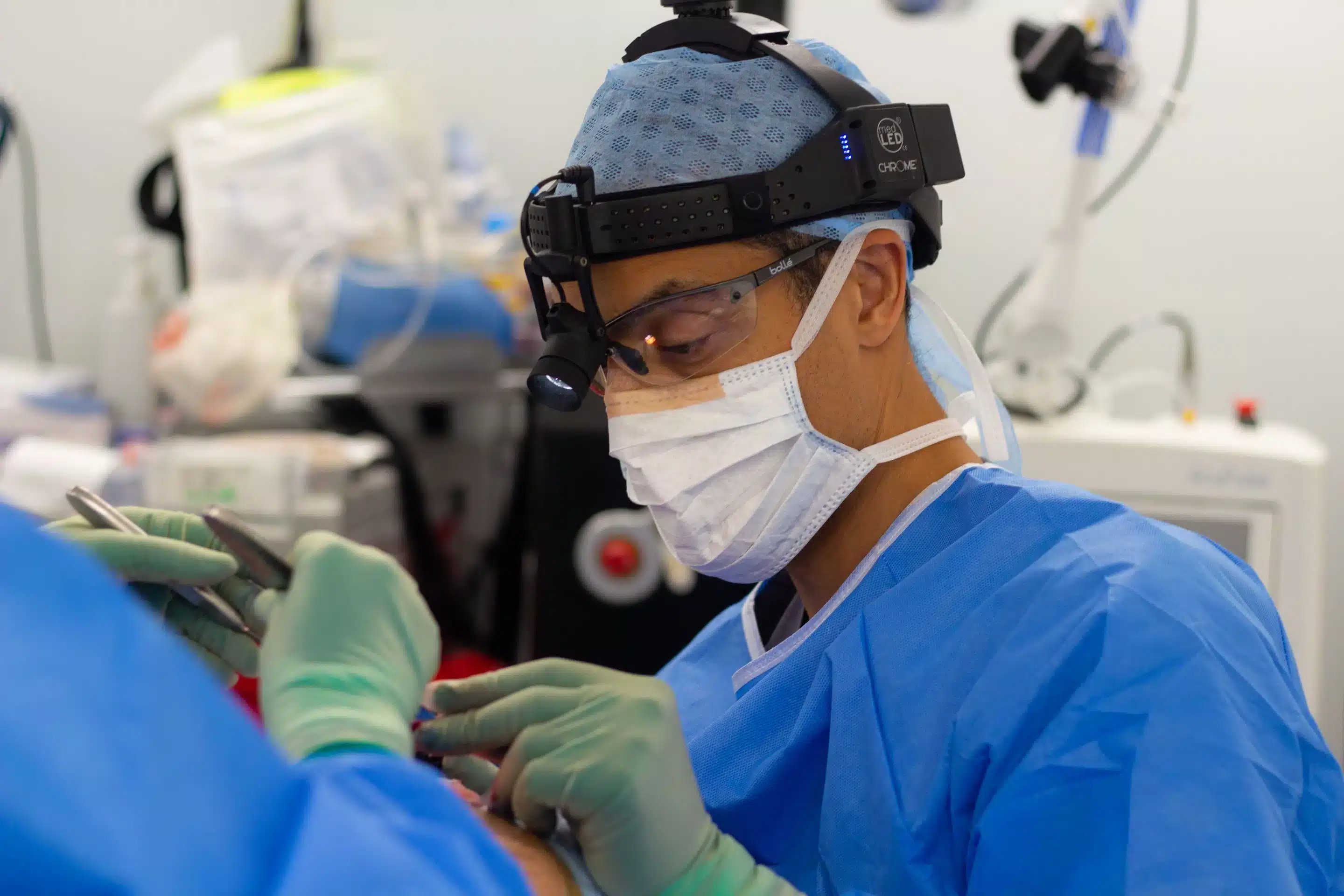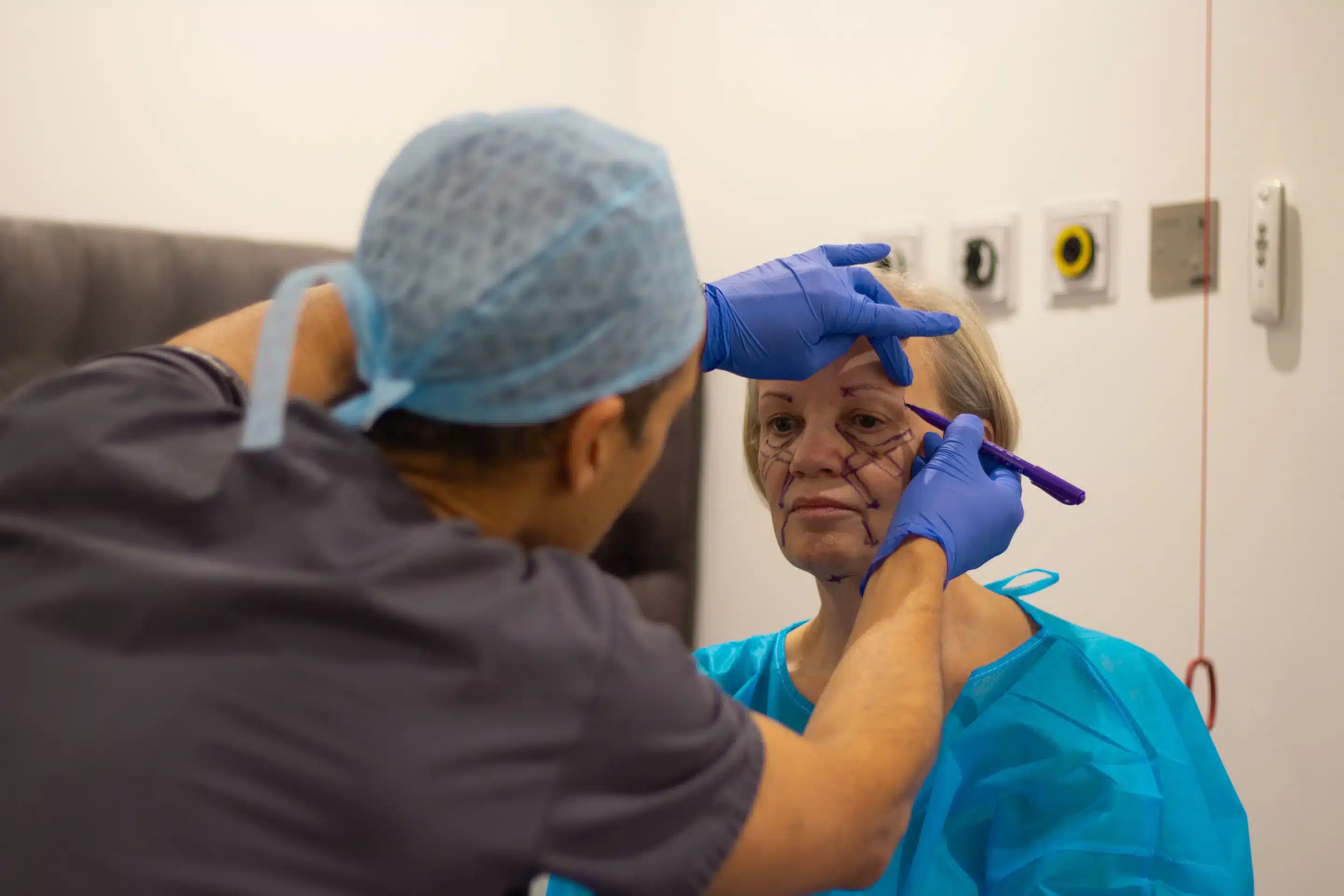As we age, the skin around our eyes starts to change. You might notice puffiness, sagging skin, or dark circles that make you look tired even when you’re not. If that sounds familiar, you’re probably wondering what your options are. Should you go for something non-invasive like fillers or laser treatments? Or is surgery the better long-term solution?
Let’s break down the key differences between non-surgical vs surgical blepharoplasty, based on expert advice from Dr Julian De Silva, a facial cosmetic surgeon who specialises in eye surgery options.
Why Do Our Eyes Age Like This?
The skin around the eyes is thinner than the rest of the face, which means it shows signs of ageing earlier. You might see loose skin on the upper eyelids, puffiness caused by fat pushing forward, or shadows under your eyes (often called tear troughs).
Creams may promise results, but they rarely make a big difference. That’s because most of the changes are happening under the surface, where creams can’t reach.
Non-Surgical Eye Treatments: When They Work Best
Non-surgical treatments can work well for people with mild signs of ageing—usually in their 30s or early 40s. Here are a few options:
Tear Trough Fillers
Fillers made with hyaluronic acid can help fill in shallow depressions under the eyes. This softens shadows and gives a more refreshed look. These are ideal if you’re younger and only have mild hollowing.
However, the tear trough area is delicate. It’s riskier than other parts of the face because of the blood supply around the eyes. If filler accidentally enters a blood vessel, it can cause serious complications, even blindness. This is why it’s critical to go to a qualified medical professional who uses dissolvable fillers and knows how to inject safely.
Botox
Botox works well for crow’s feet—those little wrinkles on the outer corners of the eyes that show up when you smile. It temporarily relaxes the muscles, smoothing out the skin. Botox is effective across age groups and doesn’t require downtime.
Laser Resurfacing and Plexr
If you’ve got fine lines or some loose skin, treatments like CO2 laser resurfacing or Plexr can help. They stimulate collagen and improve skin texture. But the effects are mild and come with a recovery time. The skin will be red or pink for a few days.
When Non-Surgical Treatments Aren’t Enough
Non-surgical options have limits. They don’t remove fat or tighten large amounts of loose skin. If you’ve got heavy eyelids, puffiness, or deeper hollows under the eyes, it might be time to consider surgery.
Surgical Eye Treatments: What Is Blepharoplasty?
Blepharoplasty is the surgical term for eyelid surgery. It can be performed on the upper eyelids, lower eyelids, or both (called quad blepharoplasty). This option allows for more dramatic and longer-lasting results.
Upper Blepharoplasty
Upper blepharoplasty removes excess skin and fat from the upper eyelids. It’s great if you have droopy lids or puffiness. The result is a fresher, more awake look.
Lower Blepharoplasty
Lower eyelid surgery reduces puffiness and smooths the area under the eyes. One common approach is transconjunctival blepharoplasty, where the fat is removed through the inside of the eyelid. This technique helps avoid changing the natural shape of the eye.
If there’s also a hollow or depression under the eye, fat transfer may be used. A small amount of fat is taken from another part of your body (usually the belly), processed, and placed under the eyes to smooth the area.
What About Wrinkles and Texture?
While blepharoplasty handles structure, it doesn’t target surface wrinkles caused by sun damage. That’s where laser treatments or regenerative medicine like platelet-rich plasma (PRP) come in. These can be done as part of your surgical plan to improve skin quality.
Recovery Time: Non-Surgical vs Surgical Eye Surgery
Non-surgical treatments like fillers or Botox take about 30 minutes. There's little to no downtime, and the results can last up to a year. However, if the wrong filler is used or placed poorly, it can cause puffiness that needs to be corrected, often with surgery.
Choosing eye surgery like blepharoplasty is a bigger commitment. Surgery takes about 1–2.5 hours, and recovery involves swelling and bruising for up to two weeks. Full healing can take six weeks or more, but the results often last 8 to 10 years or even longer.
Weighing the Risks
Every treatment has risks. For non-surgical eye treatments, the most serious risk is vision loss from filler being accidentally injected into a blood vessel. This is rare but very serious and irreversible if not treated immediately.
Surgical blepharoplasty also comes with risks, like infection, scarring, or changes in eyelid shape. But when done by an experienced surgeon, these risks are low.
Which Option Is Right for You?
Here’s a quick way to look at non-surgical vs surgical eye surgery:
- Non-surgical: Great for younger patients with mild ageing, shallow tear troughs, or light wrinkles. You’ll see faster results with minimal downtime.
- Surgical: Better for moderate to severe puffiness, significant loose skin, or deep hollows. The results are more noticeable and last much longer.
There’s no one-size-fits-all solution. The best approach depends on your specific anatomy, age, and what kind of results you’re looking for. Always consult with a qualified medical professional—ideally someone who offers both options—so you can make a decision based on what’s safest and most effective for you.
Conclusion
Do you want help choosing eye surgery or deciding between non-surgical and surgical blepharoplasty in London? Dr. Julian De Silva’s clinic in Central London, Harley Street, W1, is one of the best. Book a blepharoplasty consultation here to discuss your options and get a personalised treatment plan.





